

Montblanc Timewalker Chronograph 100 vs TAG Heuer Carrera Mikrograph 1/100: the quest for precision
The highlight of a high-frequency duel between two chronograph-savvy maisons.
As a famous song in French said: “some stories end badly”. In the present case, mastering the 1/100th second in purely mechanical timepieces was merely a utopia created to attract aficionados looking for thrills and who were unaware of the basic laws of physics. Here is the highlight of a battle between two chronograph-savvy maisons that, for marketing reasons, intend to rule the universe of high frequencies in order to stand out in the high-precision sector.
Competition is healthy when both parties benefit and learn from it. Concerning precision in measuring short time lapses, history clearly shows that watchmakers had understood from the onset that mechanical timepieces could not measure more than 1/100th of a second without hitting a wall.
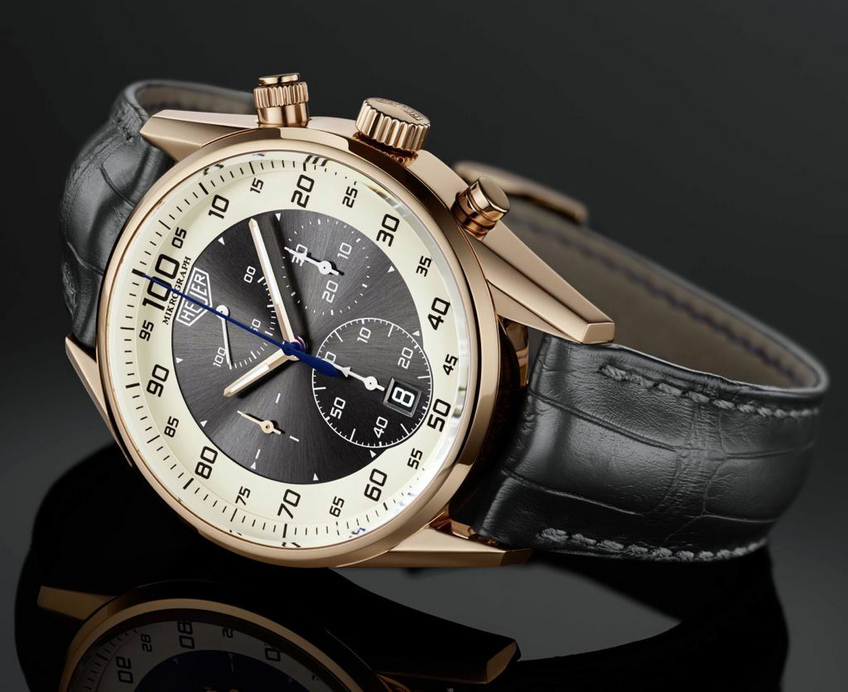
In 1916, when Europe was right in the middle of the First World War, armed forces were looking for reliable instruments to measure the distance of barrages and the flying speed of the first aeroplanes with extreme precision. In such difficult conditions, the first electrical systems developed by watchmakers for that purpose were unsuccessful. Thus, they found themselves relying again on the good old wristwatch and discovered that developing one that measured the hundredth of a second assumed its full meaning. In 1916, Heuer introduced a wristwatch able to measure the hundredth of a second: the Mikrograph. It is said that good ideas often crop up at the same time in different places and indeed Heuer was followed by Minerva, which released the same kind of timepiece in the same year. The two brands had been competitors for a century, both trying to win the race for a few split seconds. Yet, this struggle for extreme precision makes sense as the quest for precision is at the heart of watchmaking. If brands claim to be specialists in measuring short time lapses, precision is key. Otherwise, it looks as though they cannot live up to their name.
Playing with fire
We do not work to show off but to make breakthroughs in science.
Unfortunately, nowadays, excessive communication seems to be more important than the message we want to deliver. Thus promising too much and underdelivering has become an actual option in marketing. Consequently, some watches send a subliminal yet strong message to the reptilian brain of those who like unique timepieces: that these are the product of fundamental research and that they have to be improved to be available for the “mass market”. In reality, though, these products are marketing creations designed to exude a precise message that mechanics cannot fulfill as it goes beyond the limits of physics; particularly the law of gravity. Basing a brand’s vision of the future and its communication strategy on a wrong equation is not very clever as mechanics is not omnipotent and the operations that intend to make things perform in ways that that are incompatible with the basic laws of physics are, after all, a lie. Brands shouldn’t lie to consumers who only want to believe in beautiful stories. We all know that it feels almost magical to see a watch function with acute precision for a long time. Yet, trying to make aficionados believe that a mechanical watch can be so precise thanks to some kind of miraculous intervention is a blatant lie. Indeed, a mechanical watch by definition cannot go beyond the limits defined some one hundred years ago.
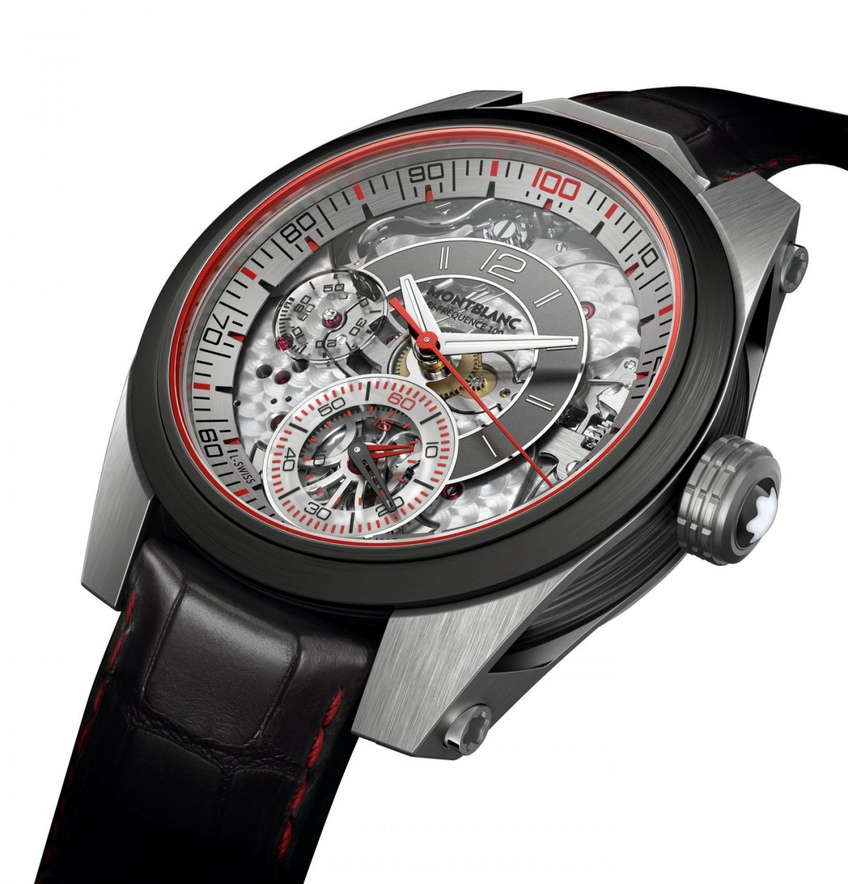
Daring to brave the elements first
Almost a century ago, the development of a 1/100th second chronograph was a true achievement and there were very few instruments that could accurately check the precision of timepieces. It was therefore impossible to check the measurement against a reference. Nowadays, however, completely electronic instruments housing quartz bars (and especially those that are thermally regulated) do provide such a reference. However, watchmakers like challenges and in January 2011, TAG Heuer released the Carrera Mikrograph 1/100th Second chronograph. Housing the modular caliber 360, this chronograph with a movement was composed of 396 parts and two balances with different vibrating frequencies. At the time of its release, it made the headlines thanks to the skill of Jean-Christophe Babin, a seasoned communicator. He managed to find the right words to describe the piece’s uniqueness at a time when rival brands did not have the answers to those innovating concepts. Thus, he obtained the attention of the media and of some collectors who were tired of the nuances of traditional products. The COSC-certified in-house caliber has established the Dual Control System principle in the TAG Heuer universe.
However, no stone was left unturned and Tag Heuer attended to every detail in order to impress aficionados who sought a contemporary watch that at the same time preserved some of the best aspects of traditional watches. An example of this is the unavoidable column wheel without which a chronograph would not be a chronograph.
Two hearts instead of one
This watch’s mechanical caliber comprises two adjusting groups. The first one deals with time display and has a 4Hz frequency; that is, 28,800 vibrations per hour. The second one – the balance –measures short time lapses with acute precision and oscillates at 360,000 vibrations per hour (50 Hz). Choosing to use two different organs featuring different oscillating frequencies was an original idea of TAG Heuer. When the piece was released, François-Paul Journe was its only rival. Thus in 2008, when F.P. Journe released the “Centigraphe Souverain”, it housed it with only one balance that oscillated permanently. True competition started for TAG Heuer when Montblanc introduced its TimeWriter II chronograph, designed by the young watchmaker Bartomeu Gomila who had joined the “Fondation Minerva” team. At the time, this did not cause much stir even though both timepieces shared some similarities. The Montblanc caliber, as you have probably already guessed, also used two balances oscillating at two different frequencies.
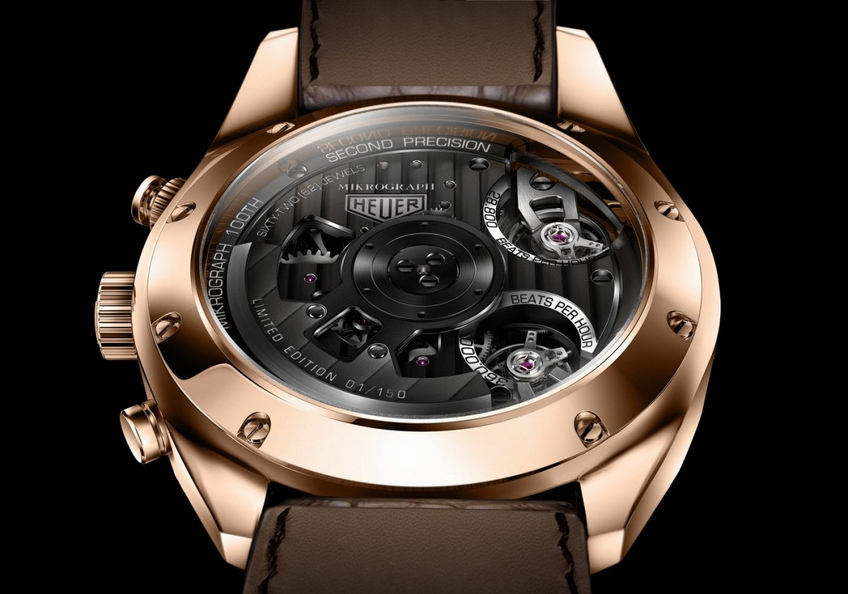
However, the media did not catch wind of the underlying competition as the TimeWriter II had a different display and the hundredth of a second in a sector at 12 o’clock worked differently to that of TAG Heuer’s. In any case, this timepiece was obviously some kind of war declaration as from that time it was crystal clear that Montblanc, a young watchmaking brand, was going to be TAG Heuer’s direct competitor as the former had the full intention of maintaining a strong position in the world of chronographs.
Playing on a level field
In 2014, TAG Heuer presented the new TimeWalker Chronograph 100, which makes it look very much like the two rival brands have extended their war declaration to the sector of high-frequency chronographs. We know for a fact that Stéphane Linder, CEO of TAG Heuer, visited the Montblanc stand at the Salon International de la Haute Horlogerie (SIHH) 2014 and we can only speculate that both directors discussed the similarities and differences of the two creations whose common aim is the 1/100th second.
Be it as it may, both instruments do look alike but upon closer inspection, they don’t share many similarities other than the display of the hundredth of a second.
It is clear from their press releases that both brands claim to be the inventors of the 1/100th second measurement. Furthermore, they both released a wristwatch with a frequency of 360,000 vibrations per hour in 1916. Given their historical advantage, they both have the right to continue to tackle this sector of watchmaking. Montblanc used a daring option by integrating two balances and barrels in a chronograph caliber as the brand was well aware that TAG Heuer had used the same production method. The Villeret-based manufacture could have opted for other mechanical solutions, but did not do so. While Montblanc chose avant-garde materials for the Timewalker Chronograph 100, TAG Heuer, based in La chaux-de-Fonds, preferred tradition and produced the watch in pink gold.
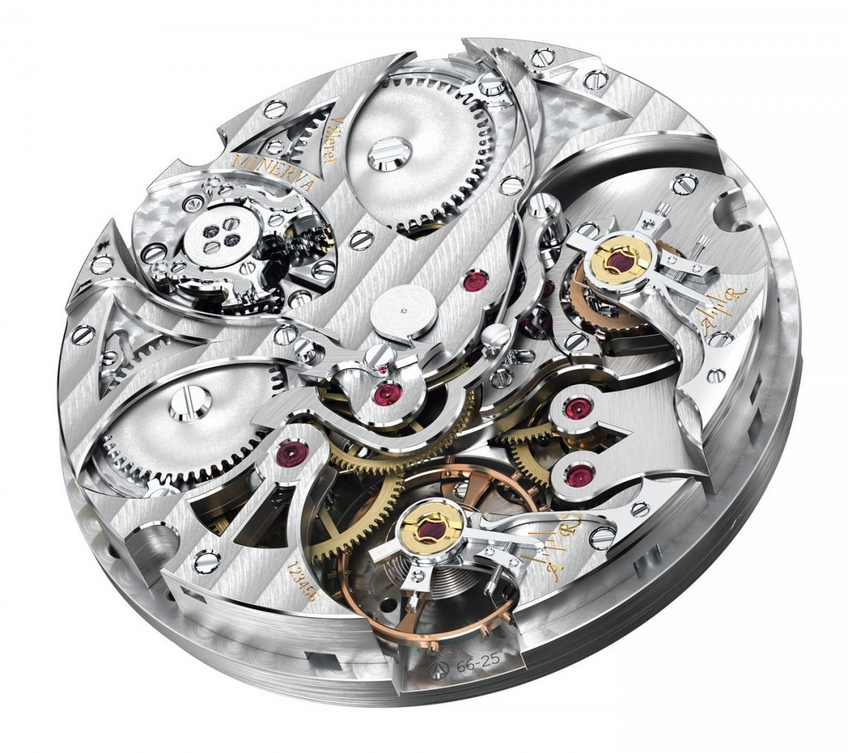
Daring major differences
As you may have already seen, a brief analysis of these chronographs may lead us into thinking that there is a true resemblance between these two models that were released three years apart from each other. However, it should be noted that, upon closer inspection, the two instruments are fundamentally very different and each features its own advantages in some sectors and disadvantages in others.
For example, the TimeWalker Chronograph 100 is a completely manual winding timepiece while the Carrera Mikrograph 1/100th second has an embedded mechanism to make the time measuring part of the piece self-winding. In terms of restarting the chronograph, the TimeWalker is at a large advantage with its patented mechanism that comprises an innovating column-wheel switch linked to a lever whip that moves back and forth swiftly. The switch starts the chronograph and enables the balance to oscillate immediately at 360,000 vibrations per hour. Still, it is yet to be determined whether the starting mechanism is powerful enough to give the balance an accurate oscillating frequency straight away. One thing is true: the starting mechanism is not visible in the Carrera Mikrograph and is not once mentioned in the brand’s press release. Guy Semon, head of TAG Heuer’s Haute Horlogerie division, has also never mentioned it although he was often asked how a balance moving from zero to cruising speed without preliminary acceleration or without oscillating before measurement could supply data as precise as the 1/100th second.
In any case, for a quartz chronograph driven by a cell or a transponder, precision will be relative as the human being is unable to measure time instantaneously and the best reaction times for sportsmen are approximately 146 m/s (indeed, if they go beyond 100 m/s as a time reaction, the Olympic Games Sports Service considers it to be a false start). Well why, then, bother quibbling over a few lost milliseconds through the balance’s acceleration since no one will be able to measure it perfectly by only pressing the push-pieces of one or any other of the instruments? Well, this is in fact a philosophical approach. Humans are imperfect but mechanics isn’t, as its role is to help humans to improve their performances in terms of measurement. The TimeWalker Chronograph 100 has yet another advantage, which is being able to stop the chronograph. The whip is also used to stop the balance completely even when it oscillates at full speed, thus immediately stopping the hands that display timed lapses. Since every detail has to be taken into consideration, we will mention that the resetting of the hand is made through a snail that enables it to regain its position while making it visible to the wearer.
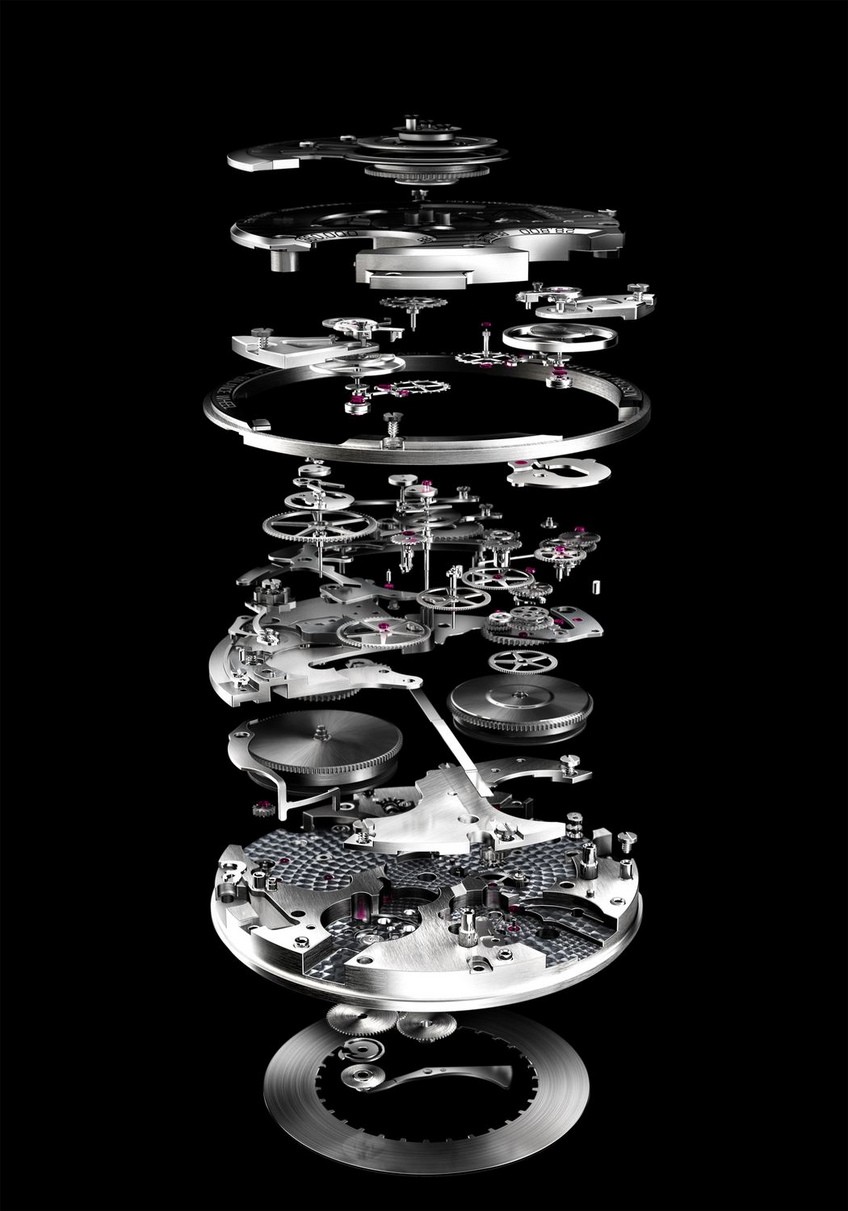
When taking into consideration the creations of brands that are more advanced in terms of mechanical precision, we realize that this is an open contemporary quest. Indeed, both chronographs – quite similar in some mechanical aspects – cannot rival with dedicated and coldly perfect chronographs. Obviously, both François-Paul Journe and Thierry Junod, Managing Director of Montblanc’s watchmaking division, highlighted the fact that they did not at all intend to use mechanical instruments to try and approach the asymptote. They were also against competing with quartz, but wanted to show their excellent watchmaking skills instead. And whether they are skilful or not, that’s for you to decide. The quality of these pieces also resides in the fact that they offer watchmakers the opportunity to push boundaries and to offer aficionados more years of competition. Indeed, in terms of adjusting and displaying short time lapses, there are still many fields to explore within mechanics in the quest for more precise time measurement. To be continued…





